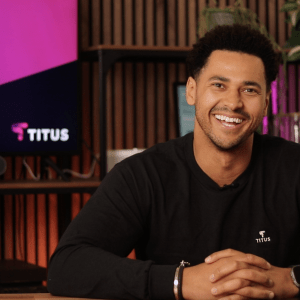This week we’re pleased to once again feature a guest post by John Mikton, who blogs at Beyond Digital. With 22 years’ experience working in Education Technology and 12 years as a Senior Leadership Team member in International Schools, John is perfectly placed to comment on all things EdTech. John is currently the Director of eLearning at the Inter Community School Zurich and was previously the Director of ICT at the International School of Prague. John is an Apple Distinguished Educator and Google Education Trainer, Common Sense Digital Citizenship: Certified Educator and trainer at the Principal Training Center and AppsEvents.
This post is inspired by an L2talk I gave at the Learning2 Europe conference in Warsaw.
“…every storyteller has a bias – and so does every platform…”- Andrew Postman “My Dad Predicted Trump in 1985 – It’s Not Orwell, He Warned, It’s Brave New World.” The Guardian. Guardian News and Media, 02 Feb. 2017

I am an addict. Are you too? Don’t you hate it when you can’t find your phone, and a friend has to call it? Maybe the first thing you did this morning was check your phone and the last thing you did today was check your phone. Think about it: we walk and text, and even drive and text. Have you had this happen – you are in a social situation and you go the bathroom to check an update? You are standing on a street corner and suddenly realize you are on your phone swiping at it, unconsciously. Then there is the feeling you get when you post a picture on a social media feed. The “likes” start coming in. It feels good, really good, and then you check back and back. You post an update and there no “likes”. You start wondering to yourself, “What is going on?”
I am sure you’ve heard about B.J Skinner’s rat experiment. The first rat had a lever in its cage, and every time it hit the lever food would come out. The second rat in the same set-up, hit the lever and nothing came out, no food. The third rat, same set-up, when it hit the lever a little food came out, then nothing, and then a lot, and then nothing again. The third rat developed an addiction. It quickly realized as long as it hit the lever it had a chance of getting some food. This is called the principal of variable rewards. That feel-good feeling: the dopamine rush. Behavior design, as explained in this article (Scientist who make our apps addictive by Ian Leslie 1843 Economist October.November 2016), is a critical part of every app development. Tech companies employ behavioral economists, psychologists, and psychiatrists in the creation, design and curation of our app ecosystems to ensure we keep coming back for more.
So many of our interactions with devices are subconscious. In Eric Pickersgill’s thought provoking photos series “Removed” (do spend some time on the link!) he highlights the idea of being “alone together” as Sherry Turkle so aptly describes in her book Alone Together. We are often physically together with another person in a space, sometimes even intimately, but our mind is burrowed in a phone.
As adults, we are quick to point the finger at kids for not being able to manage their screen-time. Think of this, the first time an infant will interact with a digital device is watching a parent using one. What does it feel like for a child in a pram looking up at their parent to only see a blank expression immersed in their smartphone? The dinner table conversation interrupted by parents checking work emails? Mary Aiken in her book “ The Cyber Effect” states we are asking the wrong question. Mary writes “We should not be asking at what age is it appropriate to give a digital device to an infant, but be asking the question when is it appropriate for an adult to interact with a digital device in front of an infant.”
A good example of behavior design is Snapchat and the new feature “streaks“. The idea of streaks if you have a dialogue with a friend over 24 hours and you continue this over days, a flame emoji shows up. In tandem a number counting your interactions keeps tally. Should one of you stop posting, an hour glass shows up giving you a heads up that the streak will disappear if you do not stay on. For adolescents social media relationships can be a gauge of their social capital. Streaks add a layer of complexity to the interactions.
I am not against digital devices. I have been working in Education Technology as a coach, coordinator, IT Director and Director of eLearning for over 20 years. I love the seamless and frictionless experience of our digital environments.
It is a fact that our online data (health apps, social media, travel, online games, GPS, shopping, search etc…) is collected, analyzed, and then sold to third parties, or curated to give us a personalized online experiences with the clear goal of manipulating our behaviors. We as educators have an ethical responsibility to be skeptical of behavior design’s narrative. Let us challenge our learning communities to question the complexity and consequences of behavior design in our lives. Stuffing a digital citizenship lesson for 15 minutes during a Friday morning advisory is not enough. We need to make this narrative an integral part of the living curriculum.
Do we want to end up being puppets pulled by the strings of choreographed digital ecosystems which we do not control?
I think it is important to understand schools are most likely the last place where children interact with digital devices with balance and pedagogic purpose. We cannot take this for granted.
If we ignore behavior design we will lose something. Free will. Surely neither you or I want to lose this?






